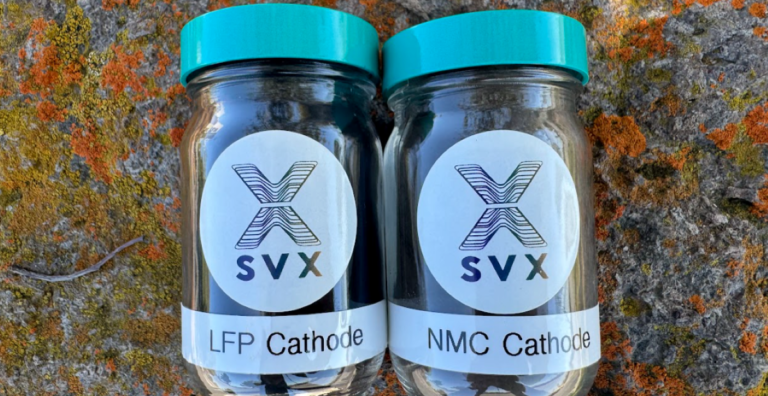US startup Sylvatex offers active materials with mixed metal oxide cathodes, made with a waterless, continuous synthesis process. The company is currently validating its technology in the domestic lithium-ion battery supply chain and plans to build a pilot line in California.
From ESS news
Sylvatex, a US-based cathode active materials startup, is developing a low-cost, more energy-efficient process to synthesize cathode materials for lithium-ion batteries. The company focuses its technology on batteries used in electric vehicles (EV) and energy storage systems (ESS).
The latest project will validate lithium iron phosphate (LFP) cathode technology in two common types of lithium-ion batteries (LIBs). The project has a budget of $1.4 million provided by the U.S. Department of Energy Agency for Advanced Research Projects-Energy (ARPA-E) through its EVS4ALL program, which will accelerate electric vehicle adoption in the US, including innovations in battery manufacturing and recycling processes.
“Our process allows a wider range of inputs to be used with the addition of a proprietary organic biowaste feedstock that is in abundance. This additive ensures that the materials come together at the nanoscale, which enables our efficient production process,” says Virginia Klausmeier, CEO of Sylvatex. ESS news.
“Using this biologically derived additive, we have developed a one-step dry synthesis process that significantly reduces energy consumption, eliminates water consumption and replaces metal sulfates with metal oxides, eliminating sodium sulfate waste,” she explained, adding that the innovation makes a smaller environmental footprint possible, along with lower capital expenditure and operating costs compared to conventional methods.
The ARPA-E project site describes Sylvatex’s waterless cathode materials process as a “simplified continuous” approach to processing LFP-based materials that “could reduce energy consumption by 80%, waste by 60% and costs by 60% in comparison with existing commercial projects. process.”
In September, Sylvatex announced it had received a grant that would allow it to start up a megawatt-scale pilot line with an expected production of 10 kg per day, to be installed in Alameda, California in early 2025. It also announced plans to “demonstrate the flexibility” of its CAM manufacturing process by applying it to both LFP and nickel-manganese-cobalt (NMC) chemistries.
The size of the Commercialization Acceleration Grant was $2.3 million, awarded through the California Energy Commission’s Realizing Accelerated Manufacturing and Production for Clean Energy Technologies (RAMP) program.
“Our technology is designed to be adaptable to various battery chemistries, including CAM for solid-state batteries and other next-generation energy storage solutions,” said Klausmeier.
This year also saw the start of a partnership with Michigan-based EV battery startup Our Next Energy (ONE) to produce and test large-format EV cells.
Earlier this year, Sylvatex shipped evaluation samples of its materials to five companies, including a global automaker, a global chemical company and a solid-state battery company.
Founded in 2012, Sylvatex has raised more than $20 million in funding, about half of which is non-dilutive research grants. “This funding has been instrumental in supporting our research, product market development and scale-up efforts as we work to meet the growing demand for sustainable battery materials for energy storage and electric vehicles,” said Klausmeier.
Venture capital investors include US-based Catalus Capital, which serves as lead investor, along with Amplify Capital and How Women Invest.
This content is copyrighted and may not be reused. If you would like to collaborate with us and reuse some of our content, please contact: editors@pv-magazine.com.


